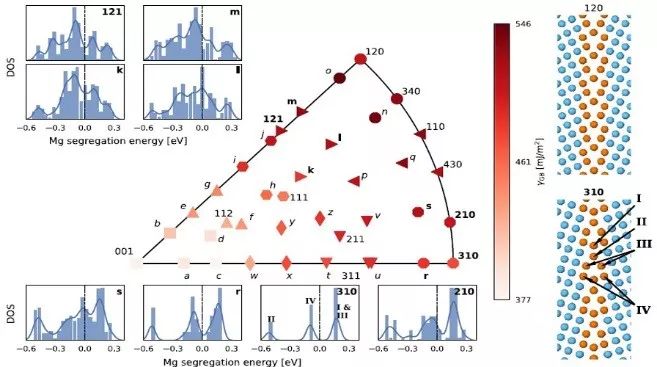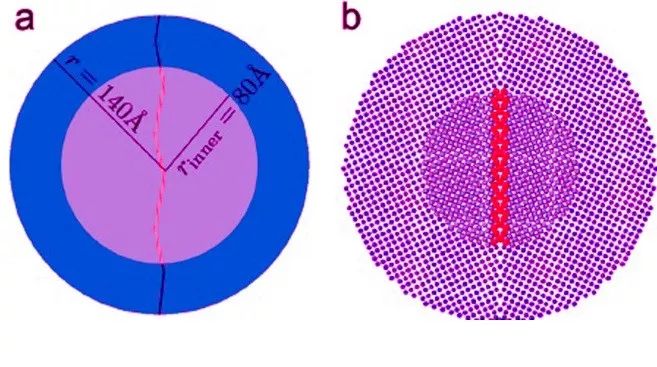npj: 机器学习—模拟溶质晶界偏析
海归学者发起的公益学术平台
分享信息,整合资源
交流学术,偶尔风月
在现代结构材料中,即使是低至百万分之一浓度的原子杂质,也可能引起其力学响应和断裂性能的质变。这些变化通常与材料晶格缺陷处的溶质原子富集,即偏析,这种重要现象有关。将偏析纳入现代材料设计策略中,必须针对这一现象建立准确可行的计算工具。然而,由于溶质原子对应的缺陷构型及可能的晶格占位数目极为庞大,相关建模需要依赖苛刻的近似。
来自德国杜塞尔多夫的马克斯普朗克für Eisenforschung研究所Liam Huber教授等将高通量计算与机器学习相结合,开发了一个模拟偏析的高效计算框架。他们首先开展高通量计算,研究了6种不同种类的溶质原子在38种不同类型的、具有低、高对称性的典型晶界中上千个点位的偏析能。进而,准确描述了偏析点位的态密度。应用机器学习,他们最终确定了仅与无溶质晶界局域性质相关的描述符,并基于该描述符计算了偏析等温线,该方法大大降低了相关模拟的工作量。如此基于常规计算确定任意晶界的偏析等温线,可以帮助我们更好地理解诸如脆化等有害的晶界问题。
该文近期发表于npj Computational Materials 4: 64 (2018),英文标题与摘要如下,点击左下角“阅读原文”可以自由获取论文PDF。
A machine learning approach to model solute grain boundary segregation
Liam Huber, Raheleh Hadian, Blazej Grabowski & Jörg Neugebauer
Even minute amounts of one solute atom per one million bulk atoms may give rise to qualitative changes in the mechanical response and fracture resistance of modern structural materials. These changes are commonly related to enrichment by several orders of magnitude of the solutes at structural defects in the host lattice. The underlying concept—segregation—is thus fundamental in materials science. To include it in modern strategies of materials design, accurate and realistic computational modelling tools are necessary. However, the enormous number of defect configurations as well as sites solutes can occupy requires models which rely on severe approximations. In the present study we combine a high-throughput study containing more than 1 million data points with machine learning to derive a computationally highly efficient framework which opens the opportunity to model this important mechanism on a routine basis.
扩展阅读
本文系网易新闻·网易号“各有态度”特色内容
媒体转载联系授权请看下方






